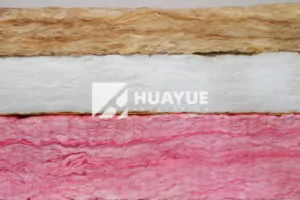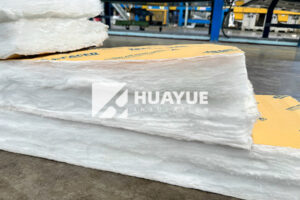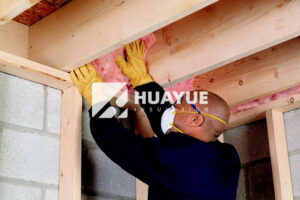What is Glass Wool? The Ultimate Guide to Uses & Safety Standards
The world moves fast, and so does modern building technology. Are you struggling to choose the safest, most efficient insulation material now?
Glass wool is a thermal and acoustic insulation material made from fine glass fibers. It provides energy efficiency, fire safety, and soundproofing benefits. Use glass wool in buildings, industry, and appliances for proven performance.
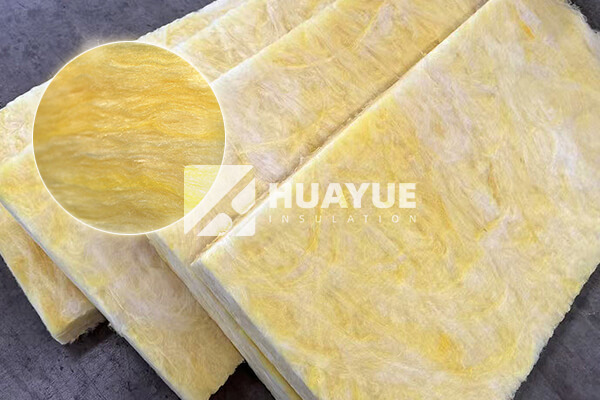
There’s so much misinformation about insulation materials. That makes it tough to see which solution is right for your project or facility. I have spent more than two decades in the thermal insulation field. This guide will share what I know about glass wool. I’ll show you how it’s made, where to use it, the latest safety protocols, and real-world value. Let’s jump in.
What is Glass Wool? — More Than Just "Fiberglass"?
Glass wool is everywhere you look, but most people only think of it as “fiberglass.” Are you missing what makes it unique?
Glass wool consists of fine glass fibers spun from molten glass, bonded into mats or rolls. These fibers trap air, creating one of the most effective insulating materials. That’s what allows glass wool to reduce heat loss, absorb sound, and resist fire—all at once.

The Manufacturing Process of Glass Wool
Many often wonder: How do you take hard, clear glass and turn it into something soft and fluffy? What happens behind the scenes?
Glass wool is made by melting glass at 1,200°C, then spinning it into thin fibers. These fibers are sprayed with binder, collected on a conveyor, and cured in an oven. The final product is compressed into rolls, boards, or mats, cut to size for different uses.
Dive Deeper: Why the Manufacturing Process Matters
The technology behind glass wool production is fascinating and important. When I toured our factory at HUAYUE, the sight of recycled glass entering the furnace, then transforming into delicate, tangled webs of fiber always filled me with awe. This process gives glass wool its famous versatility.
Here’s a step-by-step breakdown:
| Step | Description |
|---|---|
| Glass Melting | Heat glass and recycled bottle scraps to 1,200°C |
| Fiberizing | Spin molten glass—like making cotton candy |
| Binding | Spray fibers with eco-friendly binder |
| Forming | Collect on conveyor, shape into mats/rolls/boards |
| Curing | Pass through oven to set binder, stabilize fibers |
| Cutting & Packing | Cut to size and pack for shipment |
This method isn’t just about volume. The even distribution and orientation of fibers, plus binder technology, impact fire safety, thermal conductivity, and dust release. At HUAYUE, we are always improving these details. That’s why our glass wool continues to pass the strictest standards in over 100 countries.
Core Performance Explained: Why Choose Glass Wool?
Where do you see the biggest difference between glass wool and other materials? Performance. But which numbers really matter?
Glass wool delivers excellent thermal resistance (λ 0.032–0.045 W/m·K), low weight, and top-notch fire safety (often Euroclass A1 or A2). It does not absorb water, is rot-proof, and keeps its performance for decades, making it a favorite for architects, engineers, and plant managers.
Dive Deeper: The Key to its All-Around Strength
After 25 years, one thing stands out to me—glass wool offers a rare balance of properties. Here’s how glass wool compares with other insulations:
| Property | Glass Wool | Rock Wool | EPS/XPS (Foam) | Polyurethane |
|---|---|---|---|---|
| Thermal Conductivity | 0.032–0.045 | 0.035–0.045 | 0.030–0.038 | 0.022–0.028 |
| Fire Safety | Non-combustible | Non-combustible | Combustible | Combustible |
| Water Resistance | High | High | Moderate | High |
| Sound Absorption | Excellent | Excellent | Poor | Moderate |
| Density Range (kg/m³) | 10–100 | 30–200 | 15–35 | 30–80 |
It is this mix—plus low density, easy cutting and handling, and global code approvals—that lets me say glass wool is as reliable in a Munich hospital as it is in a Singapore data center.
The 10 Core Application Areas of Glass Wool (With Real Case Studies)
You may already know glass wool is popular in buildings, but did you know about its role in agriculture, firestopping, or custom OEM solutions?
Glass wool has over 10 main use areas—building envelopes, HVAC, industrial equipment, and more. Each application plays to its strengths: thermal insulation, noise reduction, fire resistance, and moisture management.
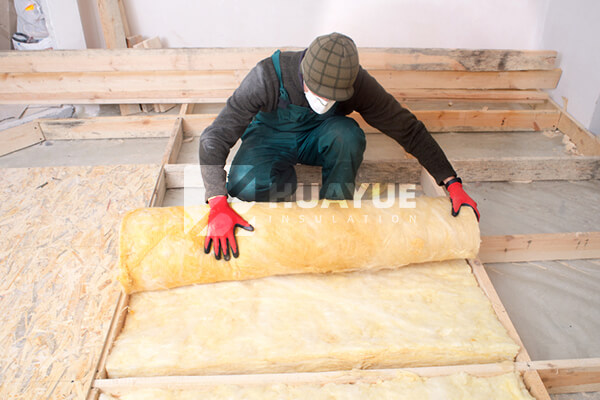
1. Building Envelope Insulation (Walls & Roofs)
Building energy rules are strict. Can glass wool help meet and exceed them?
Walls and ceilings insulated with glass wool reduce heating and cooling costs up to 30%. In a Beijing commercial center, we used multi-layer glass wool batts, reaching LEED Gold standards and boosting comfort year-round.
Dive Deeper: The Building Envelope Advantage
I’ve helped design hundreds of wall and roof systems. Here’s my go-to setup:
- Internal stud walls: Fill with flexible glass wool batts for sound and temperature control.
- Flat/curved roofs: Install rigid boards for load support and seamless coverage.
- Cavity walls: Use slab glass wool for moisture control and fire safety.
With glass wool, the R-values don’t sag over time. Unlike foams, if a roof leaks, glass wool dries out and keeps performing. Exterior building fires? Glass wool won’t ignite, giving precious evacuation time.
2. HVAC Systems
Noisy ventilation ducts and wasted energy cost facilities money. What’s the fix?
Line HVAC ducts with glass wool to cut heat loss and dampen noise. For example, in a Frankfurt data center, our duct wrap kept servers cool and cut fan noise complaints in half.
Dive Deeper: Precision in HVAC Insulation
Good HVAC insulation must keep energy inside the system and block sound. Glass wool ticks both boxes:
- Duct wrap: Flexible, lightweight mats save space, fit any shape.
- Acoustic liners: Reduce noise in commercial theaters and offices.
- Chilled water pipes: Prevent sweating and keep water at set temperature.
The easy handling of glass wool means quick install. It’s resistant to mold—essential in humid airflows—and stays in place for the life of the system.
3. Industrial Insulation (Pipes, Tanks & Equipment)
Facility managers battle heat loss and corrosion. Does glass wool deliver?
Glass wool pipe and tank wraps give long-lasting thermal insulation and resist microbial growth on chemical tanks and refineries. In one German plant, glass wool wraps reduced maintenance downtime by 40% compared to traditional foams.
Dive Deeper: Real Results in Real Plants
Years of working with chemical storage sites taught me this: Moisture and heat loss are the enemy. Glass wool does not absorb water, so it shields tanks and piping from rust and corrosion. Plus, it handles thermal cycling with no cracking. For cryogenic tanks, we supply high-density boards, engineered for both minus and plus temperature swings—delivering the best of insulation and long-term safety.
4. Steel Structure Buildings
Steel sheds heat fast. Can glass wool help regulate temperature and acoustic comfort?
Install glass wool over steel frames to limit condensation, save energy, and reduce echo. Warehouses across South America now use glass wool mats to cut summertime heat gain and lower equipment noise.
Dive Deeper: Energy and Comfort for Steel Buildings
Steel frames conduct heat quickly, making internal climate control tough. I’ve seen projects fail when designers skip insulation. With glass wool, wrap columns and beams, then add a continuous layer under the roof. The result? Lower peak summer temperatures, less condensation on surfaces, and quieter working conditions. Over time, building owners notice smaller energy bills and fewer comfort complaints.
5. Interior Acoustic Treatment (Theaters, Offices)
Does poor acoustics hurt productivity and experience? How does glass wool help?
Place glass wool in walls and ceilings to reduce echo and noise transfer between rooms. In a Warsaw music hall, glass wool panels inside the walls delivered crisp audio and zero sound leakage.
Dive Deeper: Why Sound Control Starts with Glass Wool
I have worked with architects who were stunned by the effect proper glass wool can have on a space. Acoustic panels with glass wool reduce reverberation in open-plan offices and even home studios. It is ideal for managing sound reflection because the porous structure absorbs a broad range of frequencies. This means clearer speech and less distracting noise—something we all need in schools, hospitals, and offices today.
6. Transportation (Automobiles, Train Cars)
Why is glass wool essential in transportation?
Automotive and train manufacturers use thin glass wool mats for engine heat control and cockpit soundproofing. In a recent Berlin train upgrade, glass wool insulation halved track noise for passengers.
Dive Deeper: On the Road & Rails
Years ago, I saw automotive engineers replacing heavy foam panels with glass wool. The reason? Glass wool weighs less, insulates better, and cannot burn, which is life-saving in accidents. Trains and buses need reliable fire resistance and top cabin comfort. Glass wool lines engine compartments, body panels, and even headliners. Maintenance becomes easier as mold and rot don’t develop in grueling travel.
7. Home Appliances (Ovens, Refrigerators)
How does glass wool work in everyday appliances?
Glass wool keeps ovens from overheating on the outside and refrigerators running at stable cold. In Shanghai, one appliance maker now relies on HUAYUE’s thin glass wool mats to improve product safety and save energy.
Dive Deeper: The Appliance Advantage
Many people don’t consider what’s inside an appliance. But think about the heat inside an oven or the cold in a freezer. Glass wool acts as a protective barrier, so heat or cold doesn’t escape. This boosts appliance energy ratings, keeps users safe, and meets tough safety standards for manufacturers. Plus, with the right cut and density, anything from a slim oven wall to an industrial fridge stays insulated for years.
8. Firestopping
Can insulation slow the spread of fire?
Glass wool slabs block flames and toxic smoke in walls, ceilings, and ducts. In a Paris hospital, glass wool barriers passed strict fire code, holding back fire long enough for a full evacuation.
Dive Deeper: Building Safe Exits
Firestopping isn’t just code compliance. It saves lives. I’ve seen how critical it is to install glass wool barriers in service risers, cable trays, and wall gaps. The non-combustible core of glass wool melts only at over 600°C, releasing almost no toxic gas. That’s why schools, hotels, and public buildings rely on it to form protected compartments, helping first responders keep damage contained.
9. Agricultural Greenhouses
How can you keep crops warm without spiking costs?
Glass wool mats line greenhouse walls and roofs, cutting heat loss during frosty nights. Dutch growers adopted this tech and shortened their heating season by several weeks with no crop loss.
Dive Deeper: Greenhouses Need Insulation Too
Farmers fight to protect sensitive crops from random cold snaps. The right insulation means healthier, more reliable yields. Lightweight glass wool panels go up fast and keep humidity balanced. Plants don’t get stress burns from condensation, and operators save money. For me, helping agriculture clients find simple, lasting solutions like glass wool is one of the most satisfying parts of the job.
10. Custom OEM Solutions
Can glass wool fit new, challenging product demands?
OEMs across industries choose HUAYUE for made-to-spec glass wool—thickness, density, facing, or pre-cut shapes—for everything from high-end speakers to laboratory equipment.
Dive Deeper: Partnering for Custom Solutions
I work directly with R&D teams who need more than “standard.” For a Swiss medical device company, we co-developed a micro-thin, rigid glass wool insert for portable MRI scanners. That’s the potential: whatever your product, glass wool adapts. We offer OEM supply with certified consistency, meeting global and regional requirements in record timelines.
Safety First: How to Correctly Install and Handle Glass Wool
If you want to get top performance and avoid problems, know the safety rules.
Use gloves, masks, and long sleeves to stop irritation. Cut glass wool with sharp knives, not by tearing. Clean up fibers with wet cloths. Dispose according to regulations. Ventilate the workspace and keep glass wool dry for best insulation and long service.
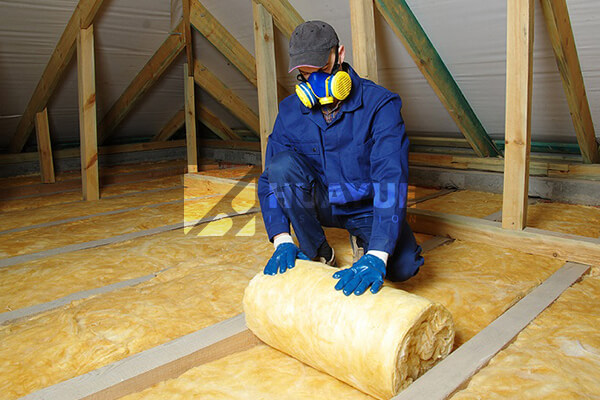
Health & Safety: Everything You Need to Know
Are there risks to handling glass wool?
If handled without protection, glass fibers can cause mild skin itching or respiratory discomfort. These effects are temporary and can be avoided with simple PPE.
Dive Deeper: Why Safety Matters at All Stages
I inspect sites often, and I insist on following health guidelines. Modern glass wool uses binders that create less dust. Still, skin and airway contact should be minimized. After installation, the product poses no hazard. As a rule, always read the manufacturer’s safety data sheet, keep workspaces clean, and train staff regularly to avoid issues.
Personal Protective Equipment (PPE) Recommendations
What gear should installers use?
Wear gloves, long-sleeved shirts, safety glasses, and a dust mask. Always change clothes and wash hands after work.
Dive Deeper: PPE Saves Time and Trouble
I have seen experienced crews skip PPE, only to regret hours of irritation. PPE not only stops short-term discomfort but also keeps small glass fragments off the skin. The latest glass wool products from HUAYUE are safer, but smart handling with proper gloves and masks still keeps projects running efficiently.
Installation Best Practices: A Step-by-Step Guide
How do you get the best performance?
Measure and cut glass wool to fit snugly. Don’t compress too much. Fill gaps fully. Use vapor barriers and secure with pins or adhesives as needed.
Dive Deeper: Step-by-Step
Proper installation is key. Here’s what I tell all new installers:
- Prepare tools: blades, PPE, ruler.
- Mark the area, measure twice.
- Cut the glass wool cleanly; do not tear.
- Fit insulation without compressing.
- Seal joints with tape or vapor barrier.
- Clean work areas with a damp cloth.
This step-by-step approach leads to better results, safer job sites, and fewer callbacks for repairs.
Frequently Asked Questions (FAQ)
Find answers to the most common glass wool questions:
- Is glass wool safe? Yes, with basic protection.
- Does it absorb water? No.
- Does it burn? No, it’s non-combustible.
- How long does it last? Decades with correct use.
- Can I use it outdoors? Yes, if weather-protected.
Why Choose HUAYUE as Your Glass Wool Partner?
HUAYUE sets the standard for glass wool. We have 30 years of leadership and a relentless focus on innovation. With strict testing, unbeatable value, and a global service network, HUAYUE is the first choice for businesses who want lasting solutions and world-class insulation.
Conclusion
Glass wool is a safe, high-performance insulation for buildings and industry. With the right installation and supplier, you get energy savings, comfort, safety, and peace of mind.
You may also be interested in:
Ready to Get Started?
Get in touch with our experts for personalized solutions tailored to your needs.
Get Free QuoteLatest Articles
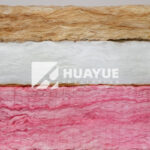
Eco Batt Insulation: What You Need to Know?
Dec 12, 2025
Let's Work Together
Ready to take your business to the next level? Get in touch with our team of experts and let's discuss how we can help you achieve your goals.
Get Free Solutions
